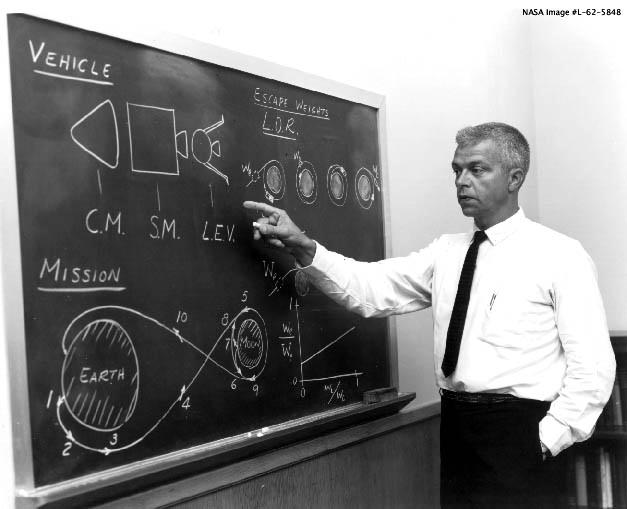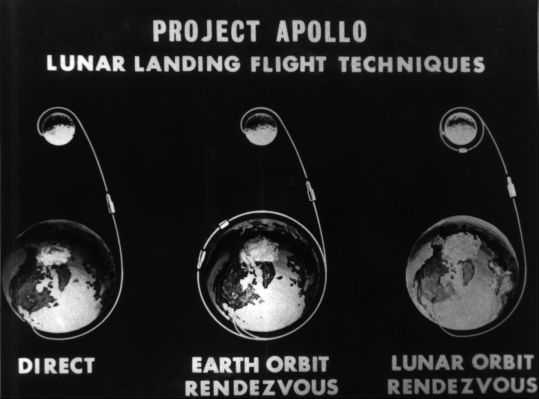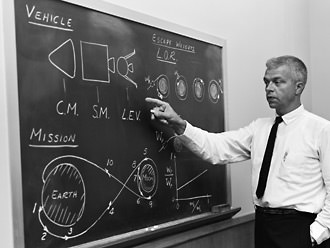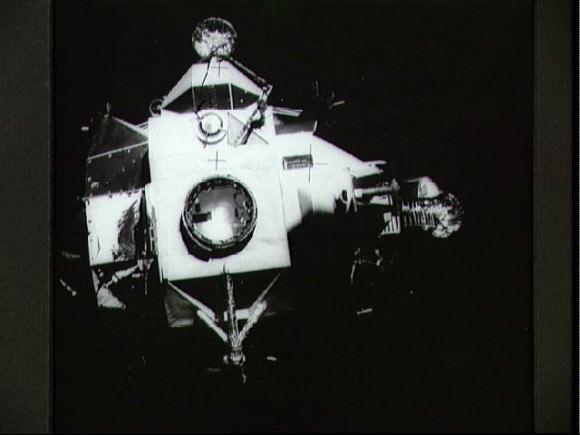The space community lost a colossus of the of the Apollo era last week, when John Houbolt passed away last Tuesday just five days after his 95th birthday.
Perhaps the name isn’t as familiar to many as Armstrong or Von Braun, but John Houbolt was a pivotal figure in getting us to the Moon.
Born in Altoona, Iowa on April 10th, 1919, Houbolt spent most of his youth in Joliet, Illinois. He earned a Masters degree in Civil Engineering from the University of Illinois at Urbana-Champaign in 1942 and a PhD in Technical Sciences from ETH Zurich in Switzerland in 1957. But before that, he would become a member of the National Advisory Committee for Aeronautics (NACA) in 1942, an organization that would later become the National Aeronautics and Space Administration or NASA in 1958.
It was 1961 when Houbolt made what would be his most enduring mark on the space program. He was working as an engineer at the Langley Research Center, at a time when NASA and the United States seriously needed a win in the space race. The U.S.S.R. had enjoyed a long string of firsts, including first satellite in orbit (Sputnik 1, October 1957), first spacecraft to photograph the lunar farside (Luna 3 in October 1959) and first human in space with the launch of Yuri Gagarin aboard Vostok 1 in April 1961. A young President Kennedy would make his now famous “We choose to go to the Moon…” speech at Rice University later the next year in late 1962. Keep in mind, in U.S. astronaut John Glenn had just made his first orbital flight months before Kennedy’s speech, and total accumulated human time in space could be measured in mere hours. Unmanned Ranger spacecraft were having a tough time even getting off of the pad, and managing to crash a space probe into the Moon was considered to be a “success”. The task of sending humans “by the end of this decade” was a daunting one indeed…
NASA would soon have a mandate to sent humans to the Moon: but how could they pull it off?
Early ideas for manned lunar missions envisioned a single gigantic rocket that would head to the Moon and land, Buck Rodgers style, “fins first.” Such a rocket would have to be enormous, and carry the fuel to escape Earth’s gravity well, land and launch from the Moon, and return to Earth.
A second approach, known as Earth-orbit rendezvous, would see several launches assemble a mission in low Earth orbit and then head to the Moon. Curiously, though this was an early idea, it was never used in Apollo, though it was briefly resurrected during the now defunct Constellation Program.
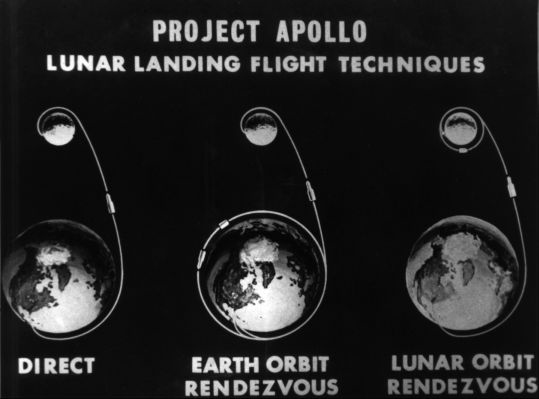
But it was a third option that intrigued Houbolt, known as Lunar Orbit Rendezvous. LOR had been proposed by rocket pioneers Yuri Kondratyuk and Hermann Oberth in 1923, but had never been seriously considered. It called for astronauts to depart the Earth in a large rocket, and instead, use a small lander designed only to land and launch from the Moon while the spacecraft for Earth return orbited overhead.
Houbolt became a staunch advocate for the idea, and spent over a year convincing NASA officials. In one famous letter to NASA associate administrator Robert Seamans, Houbolt was known to have remarked “Do we want to go to the Moon or not?”
It’s interesting to note that it was probably only in a young organization like the NASA of the early 1960s that, in Houbolt’s own words, a “voice in in the wilderness” could be heard. Had NASA become a military run organization — as many advocated for in the 1950s — a rigid chain of command could have meant that such brash ideas as Houbolt’s would have never seen the light of day. Thank scientists such as James Van Allen for promoting the idea of a civilian space program that we take for granted today.
Even then, selling LOR wasn’t easy. The idea looked preposterous: astronauts would have to learn how to undock and dock while orbiting a distant world, with no chance of rescue. There was no second chance, no backup option. Early plans called for an EVA for astronauts to enter the Lunar Module prior to descent which were later scrapped in favor of extracting it from atop the third stage and boarding internally before reaching the Moon.
Once Houbolt had sold key visionaries such as Wernher von Braun on the idea in late 1962, LOR became the way we would go to the Moon. And although Houbolt’s estimations of the mass required for the Lunar Module were off by a factor of three, the story is now the stuff of early Apollo era legend. You can see Houbolt (played by Reed Birney) and the tale of the LM and LOR in the From Earth to the Moon episode 5 entitled “Spider”.

Houbolt was awarded NASA’s medal for Exceptional Scientific Achievement in 1963, and he was in Mission Control When Apollo 11 touched down in the Sea of Tranquility.
He passed away in a Scarborough, Maine nursing home last Tuesday, and joins other unsung visionaries of the early space program such as Mary Sherman Morgan. It’s sad to think that we may soon live in a world where those who not only walked on the Moon, but those who also sent us and knew how to get there, are no longer with us.
Thanks, John… you gave us the Moon.

